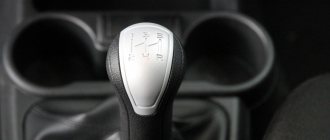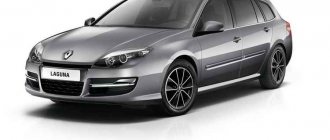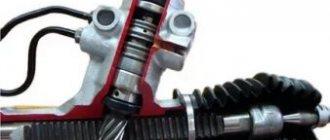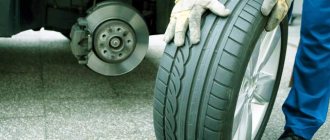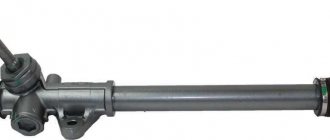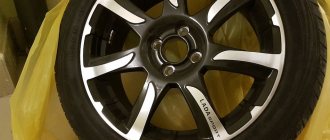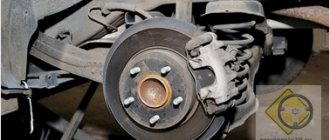Is it always necessary to balance wheels when changing tires? Tire Warehouse
Wheel balancing is not the most popular service at tire shops. Many car owners neglect to carry out such manipulation. When is this acceptable and when is it not?
Wheel balancing: what is it and why do it?
Balancing is necessary in order to reduce unbalanced rotation, that is, the wheel stops “beating” when driving. In the process, the center of mass of the wheel is aligned with the axle, reducing the imbalance to 5 g per side or less, whereas it could initially reach 60 g.
Types of imbalance:
- Static. There is longitudinal runout of the wheel when driving, because the axes of inertia and rotation are parallel to each other. If you spin the rim and tire, you will notice the wheel jumping vertically. The weight of the wheel is not distributed correctly along its length.
- Dynamic. The center of gravity of the wheel is located on the axis of rotation, which intersects the axis of inertia at an angle. That is, the weight of the wheel is incorrectly distributed across the width. Characteristic for tires with a wide profile.
How do you balance car wheels?
Tire shops have special stands for wheel balancing. They can be of absolutely any type and manufacturer, as they have identical functionality. To eliminate static imbalance, weights are placed opposite the heavier part of the wheel. During dynamic balancing - on the inner and outer parts of the disk. Places for installing weights are indicated by the machine. In some cases, both types of imbalance are found on one wheel, which can be easily eliminated in a modern auto repair shop.
If the imbalance reaches more than 60 g, then the tire is first rotated relative to the disk so that they mutually rotate 180°. This preparation allows you to achieve a more accurate result.
How often should wheels be balanced?
Car owners who change only sets of tires every season, “throwing summer and winter tires onto the same rims, must do balancing every time. But is balancing necessary when two complete sets of winter and summer wheels have been purchased, and how often should it be done?
The standard recommendation is that wheels need to be balanced every 10-15 thousand kilometers. However, you should not rely only on mileage indicators - you need to monitor the condition and behavior of the car. Any imbalance, even on the rear axle, will result in steering wheel beating and strong vibration. Therefore, it is recommended to test the car at usual speeds within 2-3 days after changing a set of wheels and assess whether balancing is needed.
Advice! Contact a tire shop for balancing if the wheel gets into a deep hole at high speed. It is also recommended to check the wheels more often on cars without ABS that skid on asphalt.
Choose from our online store:
Bridgestone tires
Michelin tires
Alloy wheels
www.sklad-shin.ru
When do wheels need balancing?
The number of visits to a tire shop for the purpose of wheel balancing directly depends on the frequency and accuracy of using the car in everyday life. The starting point is considered to be 10-15 thousand km. mileage if the car is driven on good roads. Most automakers recommend sticking to these numbers. However, ideal road surfaces are not yet found everywhere. Here are some useful tips on the topic that you should heed:
- Experts recommend wheel balancing during seasonal “change of shoes.” This is necessary even if each type of tire has its own wheels.
- Car owners should pay special attention to studded tires. Due to the loss of some of the studs, an imbalance occurs, so it is better to visit a tire service after 5 thousand km. mileage
- The wheel is also subject to balancing after a strong impact on a pothole or curb, especially if the result of such an incident is deformation of the disk.
- The driver's driving style also affects the frequency of wheel balancing. Fans of aggressive driving should check the condition of the wheels after 7-8 thousand km.
- An unscheduled visit to a tire service is also required if the tires are punctured, there is a wobble in the steering wheel, or if body vibration occurs at different speeds.
Delaying the wheel balancing procedure is quite dangerous. If there is an imbalance, uneven and accelerated tread wear occurs. Strong beating of the wheels also negatively affects the suspension parts, steering mechanism and braking system. Therefore, taking care of your wheels should be another item on your car’s maintenance list.
15 MISTAKES IN TIRE INSTALLATION
Spring is truly coming into its own, and the time has come for motorists to change into summer tires. Today we’ll talk about the most common and dangerous mistakes made by tire fitters, which you need to pay attention to in order to prevent them and decide whether to come to this workshop next time or not. Experts from the RUBICON-S company, the official representative of Snap-On (John Bean, Hofmann), an installer and adjuster of equipment for car service centers, a supplier of tools and consumables for tire fitting, will help us understand these issues.
A tire fitter lifts a car with one jack.
Some “clowns” manage to save time, especially often on “fours” and “spots”, to unscrew three wheels at once, lifting the car with one powerful jack. At the same time, the body of a new car can be severely deformed, and in the best case, the doors will not close well, and in the worst case, due to changes in geometry, the car will significantly lose controllability and safety. In the right workshops, cars are re-shoeed on lifts. As a last resort, in normal “garage” workshops they lift each side under the side members with two rolling jacks.
Doesn't sign tires
You come to a tire shop, they remove your wheels or throw off your tires and do not sign which one was installed in which place. This is one of the most serious and common mistakes, because in the future the wheels must fall into place or, if they are worn out, be rearranged in a certain way.
Car wheel balancing, rules, price and technology
Regardless of how modern and new your car is, after a certain time or driving a certain distance, you will need to balance the wheels. No matter how expensive the wheels or tires are, this procedure is inevitable, and it’s better not to put it off for later. Some drivers do not pay attention to wheel balancing and remember when the steering wheel begins to rattle and the car toss from side to side at speed.
Wheel balancing is a simple process that reduces wheel imbalance during rotation. This action on the car wheel is caused by centrifugal force. Novice drivers sometimes believe that they need to balance wheels very rarely, once a year, or even less often. On the one hand, they are right if you drive your car once a month and for short distances, but during everyday driving you need to balance the wheels as a matter of obligation, at least 1-2 times a season.
What are the types of imbalance?
During the existence of wheel balancing, experts have identified two main types of imbalance - static and dynamic.
For statistical unbalance, as a rule, the axis of rotation of the wheel and the axis of inertia are parallel. In this case, the wheel runout will be longitudinal, as a result, the center of gravity of the tire will shift to one side, and the mass of the disk will be distributed unevenly along its entire length. This imbalance is very noticeable inside the car even at low speeds, the car seems to jump, and it is impossible to grasp the steering wheel.
Dynamic imbalance is more common in cars, especially with wide profile tires, and occurs when the axis of inertia and the axis of rotation do not coincide. The imbalance itself appears when the center of gravity changes at a certain point on the disk, in which case the tire will be thrown from side to side, that is, the weight is incorrectly distributed across the width and not the height. Usually this type of imbalance, even a rough one, is noticeable at speeds above 40 km/h; the car begins to toss from side to side, and the steering wheel rattles and hits your hands.
It is possible that a tire may have both imbalances at the same time, but the situation is not so critical. This can be corrected on any balancing machine; for light alloy wheels it is recommended to use modern machines based on laser technology, then the result will be much better.
Is it worth balancing car wheels?
Sometimes inexperienced drivers wonder: do car wheels need to be balanced? The answer is clear: yes! You should not delay this procedure, as the consequences can be very unpredictable. From uncomfortable driving to partial failure of the chassis. Vibration of the disc and chassis can cause the bolts to loosen, tear out the ball joint, or even fall off the hub.
As statistics show, unbalancing a 14″ disk by 20 grams at a speed of 90 km/h and above is equivalent to a strong blow with a sledgehammer weighing 3 kg on the car’s suspension parts. Considering the rotation speed of the tire at speed, this results in at least 800 such impacts per minute. No one has the right to force the wheels of a car to be balanced, not even the traffic police, but it is worth remembering that if you skimp on balancing, in the future you will have to spend ten times more money on suspension parts and chassis repairs.
Elementary examples of untimely balancing of car wheels are rapid wear of tires, which leads to a reduction in their service life. Due to constant imbalance and wobble of the tire, the tread wears out quickly and the tire wears unevenly. Thus, a recently purchased tire may last several hundred kilometers and become unusable.
Another unpleasant moment if you do not balance your car’s wheels is a decrease in the vehicle’s driving safety. As a rule, there is no situation where centrifugal force acts on all 4 wheels in one direction, the only exceptions being supercars and luxury cars for exorbitant prices. In the usual case, each disk and tire has its own centrifugal force with certain characteristics. The rougher the road, the harder it becomes to drive, and if you hit a pothole, you may even lose control and get into an accident.
The third option for refusing balancing is failure and increased wear of the suspension. First of all, the bearings of the hub itself fail, as a result of which the entire hub can fall off at the most unpredictable moment. Also, poor wheel balancing transmits vibration to the steering wheel, which is discomfort for the driver and passengers. This is a minimum list of what can happen if the wheels are not balanced.
How often should your car wheels be balanced?
Most often, the question of how often a car's wheels need to be balanced also arises for beginners. There are no clear standards for when to balance or after what mileage. But experienced drivers still make some suggestions when it is worth balancing car wheels.
The first and most important rule is that every time you change tires, whether they are new or used, the car’s wheels are balanced in order to equalize the centrifugal force, since changing wheels or tires shifts the center of traction. In terms of mileage, it is recommended to carry out balancing after every 5,000 kilometers of a vehicle running on the same wheels.
In case of suspension repairs or frequent driving on bad roads (hitting potholes), it is worth balancing the wheels more often than 5000 kilometers; it is usually recommended after 1000-1500 kilometers. If vibration occurs in the body, in the cabin, on the gearshift lever or steering wheel, often at speeds of 60 km/h and above, balancing should not be postponed.
The conclusion is quite simple, car wheels need to be balanced every time you change shoes or tires, plus, given the condition of the roads, wheel balancing needs to be done more often.
How to balance car wheels
Car wheel balancing is carried out using special balancing machines that can track the center of gravity. The basis of such a machine can be either a primitive computer or an entire system with laser sensors and a variety of measuring mechanisms. Such a machine automatically determines the location of the deviation and indicates where the balancing weight needs to be installed.
Depending on the type of disk, the type of weight for balancing the wheels will also change; for steel disks with a special fastening bracket, for alloy wheels there are special weights that fit on the inside of the rim. The weights themselves are made of zinc or, more often, lead, but as technology developed, steel weights also appeared. The weight of the installed weight depends on the measure of imbalance; for alloy wheels, weights from 5 to 60 grams are available in increments of 5 grams. For steel wheels, these frames range from 5 to 100 grams, also in increments of 5 grams. In any case, such weights are installed when balancing car wheels.
The greater the weight required to install the weight, the more likely it becomes that you need to check the geometry of the disk or the correctness of its assembly, whether the tread is directed correctly. Stamped weights are installed on stamped or otherwise steel disks; they are attached to the edge of the disk due to padding between the disk and the tire; this type of installation during balancing is where their name comes from.
For light alloy wheels, such weights are not suitable for balancing; firstly, they will ruin the entire appearance, and secondly, they can easily damage the disk. Usually, special weights are used for such balancing; they are installed on the inside of the disk, they are also placed on the edge of the disk, such weights are classified as padded weights, but they differ in external structure. More often they put self-adhesive weights on an adhesive base, hence the name - Velcro. The convenience of Velcro is that they are easy to install and are almost invisible after balancing. The appearance of Velcro, if noticeable, is many times more attractive than padded weights. But for such weights the surface must be perfectly flat, without chipping or peeling of the paint material.
So where does the process of balancing car wheels begin? In any case, regardless of the make, model of the car or the characteristics of the rims, they must be removed from the car. It is often recommended to remove tires one by one: according to technology, remove, balance, install, remove the next wheel - they go around the car.
Depending on the service station and the equipment at it, the first thing that needs to be done before balancing is to clean the tire and disk from dirt, stones and foreign objects. Don't ignore stones stuck in the tread; they also affect wheel balancing. The tire must be puncture-free and hold pressure well, otherwise balancing will be useless. Therefore, carefully inspect the tire and make sure it is not flat.
Further, the entire process depends on the qualifications of the specialist who is balancing the wheels and on the equipment itself on which the procedure will be carried out, but 90% depends on the specialist. If the service station works on modern equipment, then the specialist himself will check for faults in the tire and wash it from dirt on a special machine. To simulate a car hub during balancing, there is a special metal plate. Depending on the number of holes in the disk, the plate is selected accordingly.
Having put the metal plate on the disk and carefully tightened the nuts, the specialist goes to the machine to begin the process of balancing the car wheels. Depending on the machine, the process for determining unevenness may vary. The most common balancing machine will determine the points of imbalance and show on which side and what weight the weight needs to be installed. If a balancing machine with laser sensors is used, then the system will show all the shortcomings, including the geometry of the disk, the disk and the tire separately, but naturally the cost of balancing the car wheels will be higher.
Having determined the location of the imbalance, the specialist begins to install weights, stuffing or gluing them onto the disk. After filling the weights, the procedure for checking for imbalance is checked again and, if necessary, the weights are replaced or new ones are added. In such a cycle, the procedure for balancing the wheels of the car, determining the imbalance and installing weights is repeated until the imbalance becomes zero or close to zero.
It is possible that the disc may lose its geometry and will have to be rolled, only then proceed to balancing the car wheels. Upon completion of all the necessary balancing stages, the tire is removed from the machine axle, then the specialist removes the metal plate from the rim and gives the tire for installation on the car. According to the advice of experienced drivers, wheel balancing should be done in pairs. If you decide to balance one of the front wheels, then be sure to balance the second front wheel, even if there is no reason to do so. It never hurts to play it safe and check.
Basic rules for good wheel balancing
As with any technology or procedure, there is a certain list of rules or advice, following which you can achieve a better result.
Balancing car wheels is no exception, since this process uses the laws of physics, which means it is better to adhere to the rules.
- Before you start balancing your car wheels, make sure that the wheel geometry is correct, otherwise the whole process will be pointless;
- The weight of the weight for balancing a wheel with normal geometry should not exceed 60 grams. If a weight of greater mass is required, then it is worth checking the geometry of the disk, the correct assembly of the disk and tire, and the wear of the tire;
- The permissible deviation when re-balancing a car wheel should be no more than 5 grams. If the tire was removed from the balancing machine and then returned to it again, then this should be the maximum difference, no more;
- The larger the wheel, the stronger and more reliable it must be installed on the axis of the balancing machine, otherwise it will affect the quality of balancing;
- The assembly of the disk and tire is individual for each wheel, so a slight deviation is allowed on each side of the wheel, weighing 10 grams;
- Before balancing, the car wheels, disk and tire must be cleaned of dust, dirt and other parts in the tread. Such factors greatly influence the correct balancing of wheels;
- The tire must be put on correctly and on the side of the rim (most often this concerns the procedure for changing a car’s shoes from summer to winter tires). Once installed on the car, the tire will fall into place almost immediately, but the balancing will be disrupted;
- Plastic wheel caps can play a significant role in tire imbalance; most often, problems arise with low-quality hubcaps. If an imbalance appears, first double-check that the hubcaps are installed correctly and only then proceed with balancing the car’s wheels.
As you can see, the procedure for balancing car wheels is not that complicated, but at home, without special equipment, it is almost impossible to do balancing. It is best to have your wheels balanced at trusted service stations, or ask your friends where they had this procedure done. An inexperienced specialist will only worsen the imbalance rather than eliminate it.
If the steering wheel wobbles or the car body vibrates, do not delay or delay wheel balancing, otherwise you will have to pay ten times more on damaged suspension or car body parts.
neauto.ru
Is balancing necessary when changing wheels? Is it necessary to do balancing after changing tires?
Wheel balancing is the process of reducing wheel imbalance to an acceptable level, aligning its center of mass with the axis of rotation. An imbalance seriously affects the car's road performance, reduces the life of wheel bearings and wears out the tire tread. A vibrating wheel has a smaller contact area with the road, resulting in an increase in the braking distance of the vehicle.
The main causes of wheel imbalance
- severe wear of rubber;
- poor installation of balancing weights;
- extensive disc deformation caused by foreign objects.
Types of wheel imbalance
- Static. Occurs when the central axis of inertia is parallel to the axis of rotation. The wheel becomes unstable and swings like a pendulum.
- Dynamic. Occurs when the wheel width is unbalanced. The axis of inertia intersects the axis of rotation at a certain angle. Dynamic imbalance can only be detected while driving.
Is balancing necessary when changing wheels?
Is wheel balancing necessary when changing tires? The answer is clear - yes, it is required. Wheel balancing must be done during seasonal replacement of wheels or tires, as well as in the event of a sudden impact, skidding, falling into a road hole, or violation of operating temperature conditions (the rubber may “float”). Leading automakers recommend balancing every 15 thousand kilometers (but at least once a year). If the driver prefers to drive on the roads at high speed, the wheels are balanced every 8-9 thousand kilometers. It must be remembered that even a minor problem with wheels can provoke an accident, so their condition needs to be given special attention.
How does balancing happen?
The fully assembled wheel, cleaned of dirt and foreign particles, is installed on a special balancing machine and centered using a cone on the axis of the device. At the stand, the operator sets the parameters of the wheel, after which the computer gives him information about where and how much weight the load needs to be added. Balancing when changing wheels is carried out using padded and adhesive weights for stamped wheels.
It should be noted that it is not always physically possible to perfectly balance wheels. In the vast majority of cases, precise wheel balancing is not required, but it is important to remember that during wheel balancing, the geometry of the disks is also checked, so this procedure in any case has a positive effect on the situation on the road.
Where to perform balancing?
You can do wheel balancing yourself, or contact a specialized tire service. Balancing on your own will cost significantly less, but novice drivers can make a lot of mistakes when doing it on their own.
www.spbkoleso.ru
Do I need to balance a new set of tires - Drivers-blog.ru
It often happens that motorists who buy a new set of tires are not at all interested in the question of whether these wheels are balanced or not.
The answer of competent specialists in this matter is unequivocal: they must be balanced, because only such a condition will help to avoid problems while driving in the future. In addition, normally and correctly tuned truck tires will last much longer, and will certainly relieve you of the suffering and discomfort caused by the effects produced by unbalanced wheels.
One of the main problematic and irritating factors in the absence of balance is the movements that such tires produce on a moving car. These movements are similar to shaking, and they increase in intensity as the speed of the car increases. This is one of the main reasons why a new set of tires must be balanced, since the presence of this unresolved problem does not allow the driver to concentrate properly on the road, which is unsafe for his life, as well as for other road users.
It is also important to consider that there are two different types of imbalance. They are known as dynamic and static. Dynamic imbalance creates the effect of vibration and shaking of the car back and forth, which can also sometimes be combined with side-to-side shaking. In order to solve this problem and achieve proper dynamic balance, it is necessary that there be the same weight both in the front of the car (the sum of the weights of the wheel and tire) and in the rear.
On the other hand, static imbalance creates the effect of the car shaking up and down, and it can also increase as the car increases speed. In addition, it may become more pronounced over time. This problem can be solved when equal weights are ensured in both wheels on the same axle of the machine.
Most self-respecting auto service centers, as well as almost every tire center or large auto store where you would buy a new set of tires, have electronic balancers to help car owners balance their car's wheels without leaving the cash register, as they say. Most of these electronic balancers allow you to check both types of balance, static and dynamic, ensuring that you drive away with a perfectly balanced new set of tires.
Many tire manufacturers have long been trying to combine the qualities of summer and winter tires in one rubber, but now they are managing to do it better and better. That's why all-season tires are becoming increasingly popular. When choosing tires, contact us - we work online in all regions of the country.
drivers-blog.ru
How to do wheel balancing yourself
Some users do not know that you can balance your wheels yourself at home. The procedure can be applied to conventional stampings and castings without modification.
Motorists use two methods.
Without removing the wheel.
Read more: Painting a car steering wheel. How to paint a leather car steering wheel yourself How to treat a leather car steering wheel from scuffing
The essence of the process is to mount the weights in the right places. The sequence is done like this.
- Raise the desired wheel using a jack.
- Completely clean it of foreign stones and dirt.
- Prepare weights weighing from 10 to 50 grams.
- Turn the disk against the machine's direction and, after it stops, mark the highest point.
- Repeat the procedure again and apply a second mark. The middle of the gap between the risks will be the easiest part.
- Next, you need to install weights on the disk. The goal is to have the lightest side on the bottom.
- After this, a static balance is selected. The installed weights are moved 2-3 cm from the center and the wheel is rotated in the direction of travel.
- After stopping, you need to spin the tire again. If necessary, the loads are moved further apart. The goal is to ensure that the disc stops in a different position each time.
With the removal of the wheel from the car. The essence of the procedure is to correctly hang the tire on the rim using a special cone. The rotating device was popular during the USSR, when there was not an abundance of service stations.
Here's how to properly balance your wheels.
- Secure the cone strictly in the center of the hub.
- With the reverse side of the tool, place it on a stump or brick in a vertical position (the wheel will be horizontal).
- Place a weight on the part of the rim that is higher than the rest.
- Pump the tire slightly with your hand and wait until it stops.
- If necessary, add more weights.
The driver is required to ensure that the wheel is positioned strictly horizontally.
You can watch the video on how to do balancing at home. You can also use special granules to balance wheels. The products are poured into the tire and independently distributed throughout the cavity. The service life of the product is equal to the operating time of the tire itself. However, the method did not take root in the Russian Federation and CIS countries. The high price has its effect.
It is mandatory to take into account that for a passenger car the maximum weight of cargo on one wheel with a new tire should not exceed 60 grams. Otherwise, this is a serious reason to return the product to the store, since this violates GOST.
Before directly calibrating the wheels, it is imperative to wash them thoroughly. When the disc hits the machine, it must be perfectly clean. Small pebbles stuck in the tread and dirt affect the accuracy of the device readings. The rule is relevant for all sizes of wheels, regardless of whether it is a Gazelle or a Porsche - 100% must be washed.
Read more: What types of car window tinting are allowed according to GOST for windshield, side and rear, as well as measurement and fine
Do winter tires need to be balanced?
- Of course, it is necessary to balance winter tires, but there is no other way. After all, this way you ensure, first of all, your safety on the road in winter, as well as the safety of other vehicles and pedestrians.
- Typically, in a tire shop, balancing when changing tires is done by default - indeed, within the framework of changing wheels, it is something taken for granted. I don’t know how many people change tires on their own right now - after all, it’s not the USSR where there were no tire workshops. Plus what does fast or slow mean? 140 km/h - how's that?
- Of course, you need to balance, who is interested in driving on chewed tires. Come to the service center and when changing tires from summer to winter, they will do the balancing for you calmly and quickly. In addition, you will not have to be reminded of this, because this service is included in the quot; tire replacement packagequot;.
- Wheel balancing directly affects the comfortable movement of the car. On unbalanced wheels, vibration is felt, which is not only simply unpleasant, but also causes tires, wheels and suspension elements to wear out faster. It follows from this that balancing is necessary for the suspension to work correctly. Otherwise, at high speed the car loses stability.
Balancing has the goal of uniformly distributing the mass of the wheel relative to its center. This procedure prevents vibration and rapid wear of tires and wheels.
Summary - wheel balancing cannot be neglected.
- You need to balance. Tires should always be well cared for - rubber is life. The tires and brake system should always be in excellent condition.
- Balancing is necessary every season, including winter! Do not think that you drove so carefully that the balance of the tires was not lost - this is just self-hypnosis, justified by laziness and reluctance to waste time and money on trips to a tire shop.
The consequence of unbalanced winter tires is a gradual deformation of the disk along with the tire, so it’s better to get old.
- There are two seasons, winter and summer, so when we change tires for the season, we also need to balance the wheels, there is also a chance that the balancing will come off, so try to check it often.
- Always when replacing tires at a tire shop, the wheels are balanced; this must be done to prevent wheel runout, which leads mainly to wear of the hub and bearings, and gradually all the rubbing parts of the suspension wear out.
- Yes, and without fail. Tires need care. So it is imperative to balance. Moreover, if you do this at a tire shop, they won’t even ask you; this service is included in the cost of replacing winter tires.
- Why can't you travel fast in winter? and you have to go outside the city, and the weather in winter is not always ice and snow. In any case, be sure to balance! miser pays twice!
- You need to balance any tires (or rather wheels). Balancing is mandatory before each (winter or summer) season, although it all depends on your seasonal mileage and the quality of the roads (balancing weights tend to fly off). I recommend balancing during seasonal tire replacement.
Good luck.
- A loss of 100 grams of weight in one season kills a 16-radius tire. Skoda Yeti car, Michelin X Ice Nord 2 tires. First, a weight is lost in the snow, the balancing is disrupted and a slight vibration appears, which goes away after 2-3 thousand km. Why? Because the heavy part of the tire begins to wear out at an alarming rate, the tread in the place opposite the lost weight is worn down to zero and balance is restored. Throwaway rubber.
- It's definitely necessary. Any tires need to be balanced if you drive on public roads.
info-4all.ru
Balancing. Reasons for carrying it out
What is required for safe movement? Of course, the tires themselves play an important role in driving on the roads, but other components are no less important for safe driving. Balancing is one of the most important and necessary stages when assembling a wheel; it reduces to normal the imbalance of all components of the wheel: tires, disks, etc. With wheels that are not balanced, handling deteriorates sharply, and the braking distance increases significantly. These indicators affect traffic safety. If the wheels are poorly balanced, the steering is less obedient, thereby the car becomes poorly controlled and even an imbalance is disturbed, which sooner or later will make itself felt. It's safe to say that balancing is simply necessary.
How often should you have your wheels balanced?
Having felt the vibration transmitted from the wheels to the steering wheel, brake pedal and car body, the car owner wonders what wheel balancing is and how often it needs to be done to prevent unpleasant consequences.
Author of the article: mudriy_lev Specialization: repair of auto generators and servos in cars. Place of work: service center. Experience: 2 years. Education: higher education - electrical engineer, secondary specialized education - mechanical assembly mechanic.
What causes wheel imbalance?
As a result of the influence of centrifugal force on a rotating wheel, a beat occurs, the intensity and frequency of which varies depending on the speed of the car. Operating the machine after wheel imbalance appears is fraught with the following consequences:
Types of wheel imbalance
Depending on the coordinate location of the axes of rotation and inertia, two types of wheel imbalance are distinguished:
- Static, when the axes of rotation and inertia are in the same plane and parallel to each other. In this case, a shift in the center of gravity of the wheel is observed. To diagnose wheel imbalance, it is necessary to spin the wheel around the axle and monitor the presence of pendulum-like rotation.
- Dynamic, which is characterized by the lack of coincidence between the axis of rotation and the axis of inertia. It occurs as a result of non-optimal distribution of mass across the width of the wheel. To diagnose, it is enough to visually inspect the rotating wheel on a jacked car.
Causes of wheel imbalance
The appearance of imbalance is possible during normal operation of the vehicle, but it is usually preceded by the following events:
- getting the wheel into a significant hole, or driving along a road with a lot of potholes;
- hitting the curb with wheels, for example, when parking poorly;
- changing tires due to seasonality or wear of old tires;
- a large amount of dirt on the wheels, for example, after leaving the city;
- tuning a car with low-quality plastic caps with disturbed weight distribution;
- shrinkage processes that occur after running in a new tire;
- restoration operations were performed on the disc;
- There was a tire puncture.
Frequency of need for wheel balancing
Balancing must be done if one or more of the situations described above have occurred and could cause wheel imbalance.
In addition, balancing must be done in the following cases:
- The mileage of the car after the last check is 10-15 thousand kilometers. The figure for when to do balancing is individual and is indicated separately by the automaker for each model produced. Typically, the need to carry out balancing due to the change of season offsets balancing due to mileage, since few car owners reach 10-15 thousand kilometers in six months. An aggressive driving style reduces the balancing interval to 7-8 thousand kilometers, regardless of the recommendations of auto giants. It is possible to determine more accurately how often to perform balancing only by comprehensively analyzing all factors.
- Long trip. Before and preferably after a trip over 2000 kilometers, it is necessary to balance the wheels so that destructive vibration does not appear while covering the distance.
- The occurrence of vibrations on the steering wheel, brake pedal, and car body. Regardless of the preceding factors and mileage, if the listed symptoms occur, you must visit a tire shop as soon as possible.
Frequency of need to balance rear wheels
An imbalance of the rear wheels causes much less discomfort to the driver than an imbalance of the front wheels. This is due to the fact that vibration is not transmitted to the steering. In the case of the brake pedal beating, it has a small amplitude and appears extremely rarely. It is for these reasons that rear wheel imbalance is a fairly common occurrence.
Despite the smaller decrease in comfort when driving, the consequences of an imbalance of the rear wheels are similar to those of the front wheels, since all the overloads that occur on one wheel are successfully transferred to the other wheels. Therefore, balancing the front and rear wheels must be done simultaneously. The only exceptions are cases if balancing is performed as a result of damage exclusively to the front wheels.
Symptoms when you need to do wheel balancing can appear both suddenly and gradually intensifying day by day, depending on the reasons for the imbalance. A visit to a tire shop should not be delayed, regardless of the nature of the imbalance.
autoabra.com
The concept of imbalance and its types
Imbalance is a violation of the normal balance of a wheel caused by tire wear or deformation of the wheel rim.
There are two types of this phenomenon: static and dynamic. In the first case, the axis of rotation takes a parallel position with respect to the axis of inertia, shifting the center of gravity in a certain direction. Visually, static imbalance can be determined by lifting one side of the car, spinning the freely rotating wheel and observing it. Before it stops rotating, it will make several pendulum movements in different directions and stop when its center of gravity is at the lowest point.
Such symptoms are not critical for the car, but are fraught with uneven tire wear and increased fuel consumption. Whether it is necessary to balance the wheels in this case is, of course, up to you to decide, but over time, a static imbalance can develop into a dynamic one, and then fuel and tires alone will not do the trick.
Dynamic imbalance is characterized by the intersection of the axes of rotation and inertia. In other words, the weight of the wheel is distributed unevenly not across the height, but across the width. In this case, the vibration causes the wheel to begin to “write out” a figure eight. Dynamic imbalance is also determined visually, but correcting it is much more difficult than static imbalance.
Wheel imbalance very often causes:
- uneven and accelerated tire wear;
- destruction of the wheel bearing;
- rapid wear of suspension elements;
- reduction in management efficiency;
- reducing the level of comfort.
Do I need to balance the wheels if the wheels and tires are new?
How can you tell if your wheels are poorly balanced?
Poorly balanced wheels can be identified through visual analysis if you are aware of the specific balancing points you need to pay attention to. Firstly, if you notice signs of a layer of dirt and dust on the tires, this is a guarantee that
more details
How do wheels balance without a center hole in the rim?
Mobile/stationary tire service specialists carry out seasonal/forced balancing of disks/tires without a central hole (typical for French car brands) using flange adapters. The process involves the use of flanges,
more details
What is the effect of improper wheel balancing?
If the seasonal/forced wheel balancing procedure was carried out in violation of the technology, this will entail a guaranteed shift in the center of gravity of the translational axis of the wheel during movement. Due to this, the operational/technological characteristics of the vehicle deteriorate, such as:
more details
Is it safe to use wheels with spacers?
The use of spacer rings intended for alloy wheels is absolutely safe for wheels. In addition to the fact that spacer rings do not interfere with the operation of the car, they improve the level of its maneuverability and directional stability during high-speed travel.
more details
angelshin.ru
Do tires need to be balanced every season?
To begin with, a small educational program. Balancing is the alignment of the center of mass of the wheel with the axis of rotation. In this case, the loads are secured against the heavy part of the wheel. This is the definition of static balancing. And since the wheel is not a thin disk, but a rather wide roller, so-called dynamic balancing is necessary, when weights are placed on both the outer and inner parts of the wheel rim. Naturally, the wheels need balancing immediately after mounting the tire on the rim: after all, the imbalance can reach 50–60 g on each side. If it turns out more, then it makes sense to “rotate the tire relative to the disk, ensuring their mutual rotation by 180 degrees. With this initial balancing, workers
tire fittings provide an imbalance of less than 5 g per side. It is believed that a new tire is capable of slightly changing its position on the rim during the first kilometers, and therefore the balancing will go down a little.
Now let's turn directly to our topic. If you alternately install winter and summer tires on the same wheels, then you cannot avoid balancing. There is nothing to argue about here. The question of balancing every season arises only among those car owners who have two complete sets of wheels: summer and winter.
So, should your wheels be balanced at every seasonal change?
If you approach the process formally, then it is worth remembering the instructions for the car. It is usually recommended to balance wheels after driving from 10 thousand to 15 thousand km. If you drive less in one season, then you definitely shouldn’t balance, except for the cases specified below.
But this is in theory, but in practice I advise you to monitor the behavior of the car. If you don’t feel any noticeable beats in the steering wheel, then balancing is not needed. The runout of the rear wheels is felt less, but they usually suffer less often. In any case, you should feel a strong imbalance.
If you replace your tires yourself twice a year, the following recommendation applies to you. Put the wheels on and drive for a couple of days. During this time, the tire will get rid of deformations that occurred during storage. If there is no vibration at all the speeds you drive at, you don't need to perform balancing.
Balancing is necessary in the following cases:
- you travel more than 15 thousand kilometers per season;
- after the last balancing, the wheel fell into a deep hole at high speed;
- last season you began to notice the vibration, but put off the balancing “for later;
- if your car does not have an anti-lock brake system, and you often skid on asphalt surfaces;
- you are a novice driver who will not feel any imbalance on the wheels.
Photo: depositphotos.com
https://www.zr.ru/content/articles/909380-nuzhno-li-balansir…
ourmotorhome.ru
Is wheel balancing necessary after storage?
It’s already cold outside, it’s just about to start snowing, and motorists are slowly switching to winter mode, starting to prepare themselves and their car for the cold, snow and frost. The first question is to change the tires. Is it necessary to balance wheels before winter after they have been stored for six months on your balcony, garage or tire warehouse?
When is balancing needed?
Let's figure out what balancing is. When a tire mechanic performs balancing, he places weights on the tires. They allow you to align the center of gravity of the rubber with the axis of rotation of the wheel itself. Thanks to this procedure, if you felt a beating in the steering wheel at high speeds, this trouble will go away and the imbalance will be eliminated.
If you have one set of wheels, and you change tires from season to season, balancing is simply prescribed for you. And every time you will have to balance the wheels at a tire shop, since the center of gravity shifts. If you have two sets, then balancing is not necessary so often.
The balance can be disrupted by improper storage conditions for tires. Still, there are certain rules and requirements for this. Most often, tire warehouses comply with them, but if you store tires yourself, you may break them. If the tires are slightly deformed during storage, you will have to undergo balancing. If you store your tires yourself, follow the manufacturer's advice.
Why is balancing important in winter?
According to the advice of experts, the wheels are balanced about once every 15 thousand km. But before winter, many motorists are still advised to do this separately. These are still difficult conditions, judging by the Russian winter, extreme. And if you often find yourself in conditions where the car slips or gets stuck in the snow (for example, you live outside the city or your yard is poorly cleaned), the weights may fly off and you will have to go through balancing again).
And when you drive on snowy roads, listen to your feelings. If the steering wheel starts to hit, the weights may have shifted, and you should go to a tire shop for balancing.
Photos from Internet resources
www.drivenn.ru
see also
- Winter wheels for Kia Picanto
- Winter wheels for Kia Sid
- Winter stroller large wheels
Choosing winter wheels while driving- Winter wheels on Audi Q3
- Winter wheels for Nissan laptop
- Winter wheels for Skoda Rapid
- Winter wheels for Kia Picanto
- Winter stroller sled with wheels
- Winter wheels for VAZ 2110
Winter wheels on Lada Vesta
